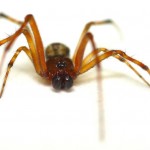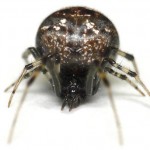MN Exterminator Minneapolis Minnesota
Fall is here, another Minnesota winter is coming and you’re ready for a change of season (if a couple of weeks can be called a season). But we’re not the only ones preparing for the changing season. Bugs, and other insects, as well as wild animals are already are beginning to look for a cozy place to call home because they also know winter is on the way. All they need is a home with plenty of food, a source of water, and a place to crash.
The seasons in Minnesota play a major role in pest an insect activity. Spiders, beetles, box elder bugs, mice, rodents, and other overwintering pests begin to move indoors as temperatures drop and cooler weather approaches. These pests like to use walls, voids, basements and attics as their winter retreats.
For example, even the slightest rain can cause ants to seek refuge in your home. Your home could be their first choice. They might be residing, growing, and multiplying right under your nose already! The world is literally crawling with insects… about 10 quintillion (that’s 10,000,000,000,000,000,000), creeping, crawling, flying, burrowing bugs, according to scientists at the Smithsonian Institution. And this is only a guess, because, of course, it’s impossible to count that many bugs.
Every one of them is a superhero of some sort. Sometimes, like those comic book characters, in cute little skin tight suits with a cape, they work for the good of humanity. Most of these insects are completely harmless and may even provide valuable services for us.
Ants
 Although it might be hard to hard to know which ones are heroes, all insects work to make life livable by keeping nature in balance. Ants, for example, might be annoying in the kitchen, but they are a major caretaker of trees and plants; they eat other pesty insects, clean up debris, loosen the soil with their tunnels of their super societies, and harvest seeds. Ants might be small but they can lift objects 100 x heavier than themselves! Nice work itty bitty ant!
Although it might be hard to hard to know which ones are heroes, all insects work to make life livable by keeping nature in balance. Ants, for example, might be annoying in the kitchen, but they are a major caretaker of trees and plants; they eat other pesty insects, clean up debris, loosen the soil with their tunnels of their super societies, and harvest seeds. Ants might be small but they can lift objects 100 x heavier than themselves! Nice work itty bitty ant!
Spiders
Spiders– Now these guys are an interesting bunch. Despite their creepy reputation, they are one of natures most unsung heroes. Hunters, one and all, spiders stalk with infinite patience, chase with incredible speed, and snatch their prey with lightning quickness. They use more tricks than any human hunter can conceive.
Spiders are as familiar and well known to most people as they are disliked. The unpopular reputation of spiders is undeserved. Myths about spiders and the negative consequences of biting by a very, very small number of species overshadow the ecological benefits spiders provide. All spiders are beneficial predators that feed on insects, spiders, and other arthropods, and thus help reduce pest populations in and around homes, landscapes, gardens, and crops.
Spiders are found virtually everywhere, from mountaintops to the seashore. They are one of “the good bugs” — in your yard or garden and a great way to reduce the number of damaging insect pests without having to resort to toxic pesticides or insecticides. Without these insects we would be “neck-deep” in excrement and dead plant and animal tissue. (Three cheers for the arthropods!).
Lady Beetles
Next, are Lady Beetles – Most people recognize at least some lady beetles. Lady Bugs lead the list of champs. Cute as a button for sure, but beneath that happy little exterior is a voracious killer that scuttles over, under, and around stems and leaves in search of their prey. They are eating machines that feed on aphids and other soft-bodied insects that can damage plants in agricultural crops, gardens and landscapes, making them beneficial insects to farmers and gardeners. However, one lady beetle species, the multicolored Asian lady beetle, Harmonia axyridis (Pallas), has become very troublesome in Minnesota.
Asian Lady Beetles
As the weather cools down in October and November, lady beetles (ladybugs), especially multicolored Asian lady beetles, can often be found congregating on the outsides of buildings and homes, especially on the sunny south and west sides of buildings. These insects are looking for shelter to survive the approaching cold of winter. In pursuing this effort, they will sometimes enter homes and other buildings. Once adults find a location that appears to be a suitable overwintering site, they release a chemical, called a pheromone. The chemical attracts other multicolored Asian lady beetles, which may arrive in very large numbers. While they do not carry disease and do not reproduce indoors, their sheer numbers can make them an irritating nuisance.
Bees, Wasps & Yellow Jackets
The early spring has contributed to an above average number of bees this summer. Bees, wasps and yellow jackets can be found nesting in a variety of different places, depending on the particular species. They range from aerial nests, e.g. hanging from tree limbs or the eaves of homes to subterranean nests, e.g. nesting in old mouse burrows to nesting in various voids in buildings. These nests, especially the cryptic ones, are present all season, but may not be noticed until late summer when the workers are more numerous.
Although, they don’t get enough respect, wasps are beneficial because of the insects on which they prey. Unsavory habits aside, wasps are just as much heroes as the insects they kidnap. Without wasps, our garden pests would zoom to epic proportions. So if a nest is located in a site away from human traffic and is not a risk for stings, then just ignore it.
All of the inhabitants of the nest will eventually die in the fall when freezing temperatures arrive. If however, the nest is located somewhere where people could get stung, then the nest should be eliminated. There are some situations where you can eliminate the nest yourself. But, a professional might be a better option. Because being able to distinguish bees from wasp or other bee species is important to make appropriate decisions about potential control.
Prevent Insects In Your Home This Winter
Insects are less likely to establish in a structure if what they need (water, food, and shelter) is not available. The trick is to make your home less favorable to the unwanted guests.
Set aside the pesticides. They may be a quick fix, but natural controls are better and healthier for everyone in the long run. A few simple and inexpensive repairs to the average home, plus pest proofing or sealing the outside cracks will help to prevent them from getting inside. This can be done by sealing all outside cracks and crevices around doors, windows, siding, utility pipes and other openings with a good quality silicone or silicone-latex caulk. Window screens should not have any tears and should fit snugly inside the window frame. Install insect screening over attic and exhaust vents. Take measures to exclude these guys before late autumn when they begin to seek over-wintering sites – potentially in your home!
If an infestation does occur, the help of a Minneapolis MN Pest Exterminator may be needed to properly identify the pest and precisely treat the infested area for the best control. And while you’re getting your house ready for a change in the season, contact a Wild Animal Management Expert to make sure it’s wild life-proofed as well.






